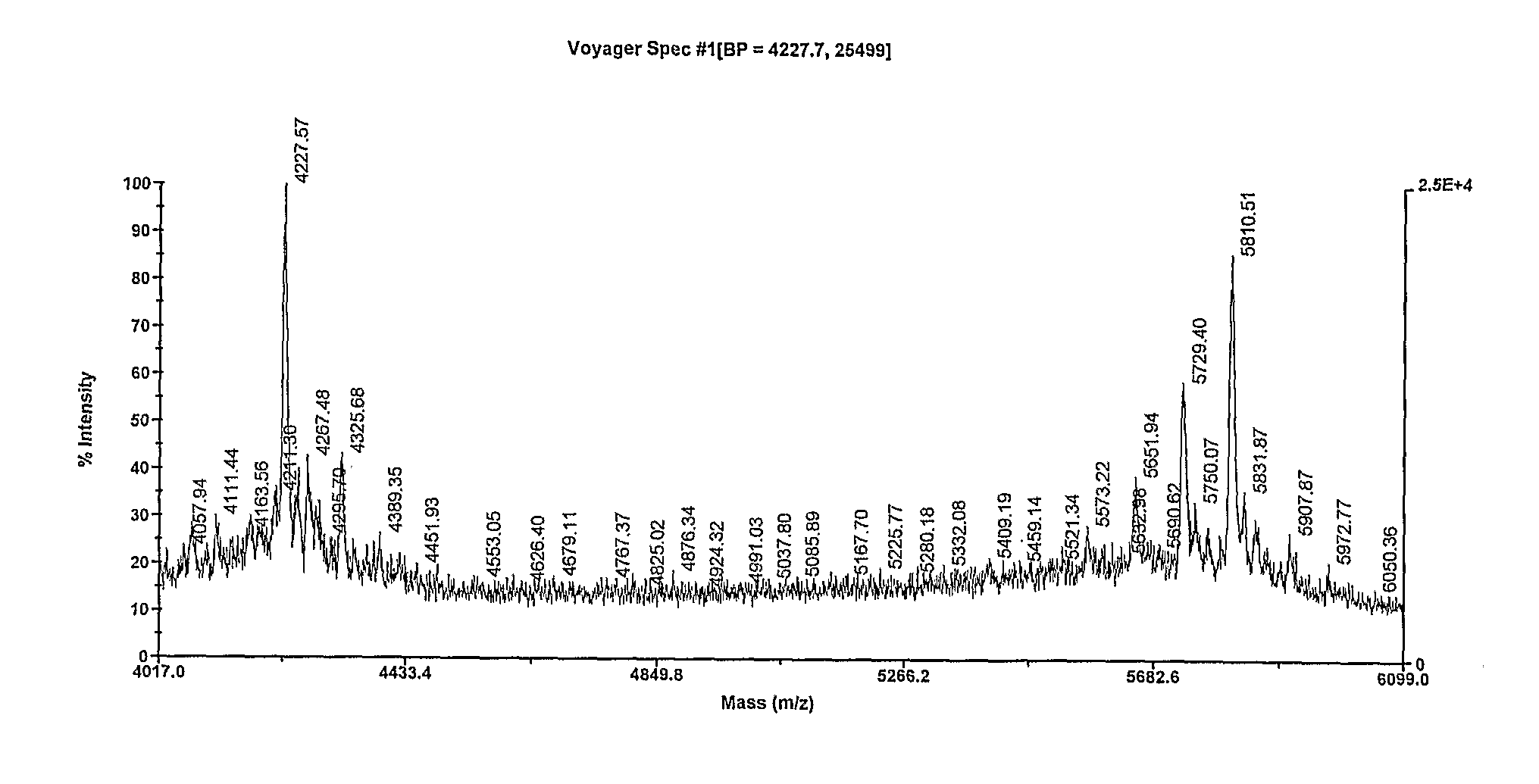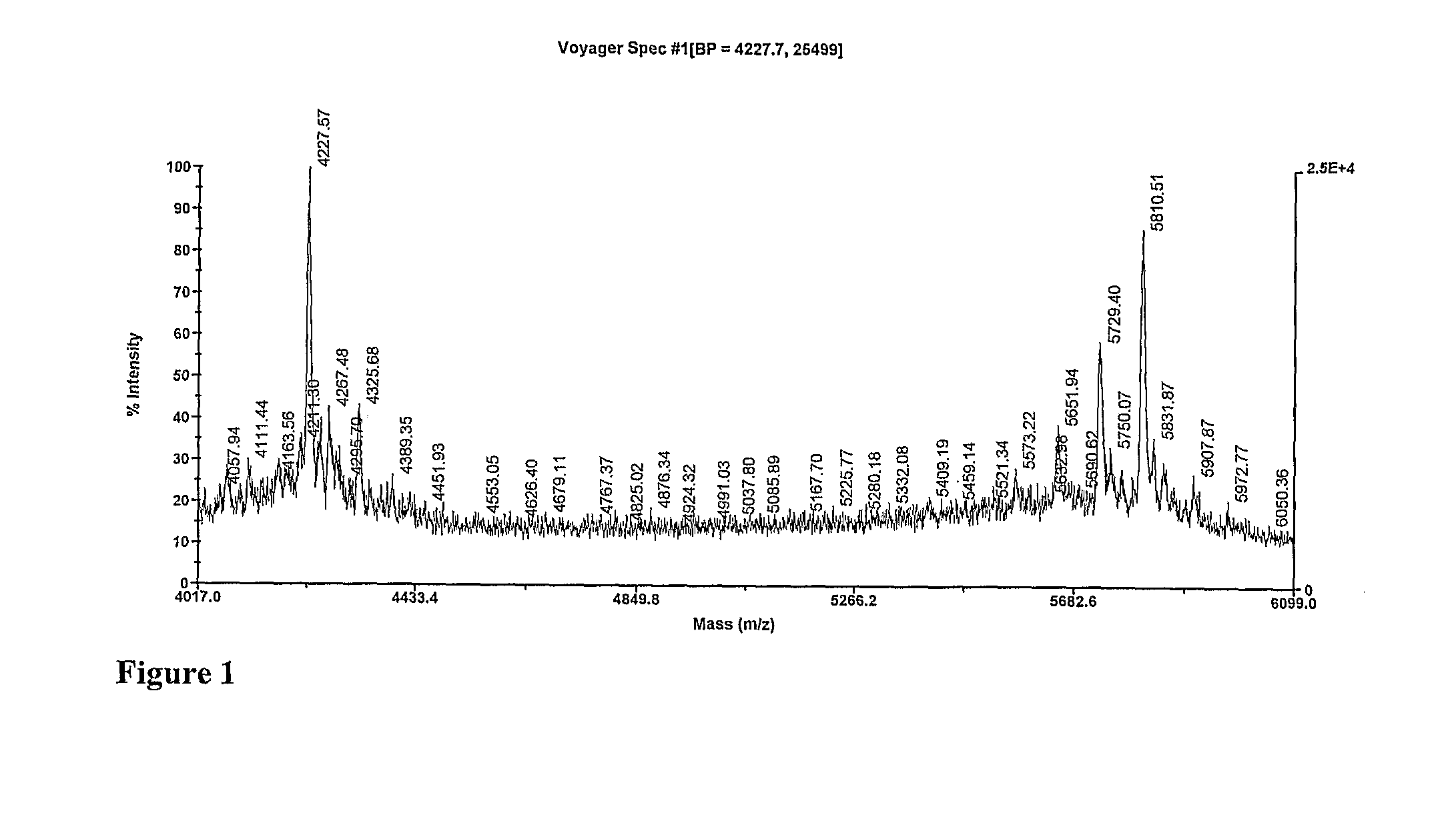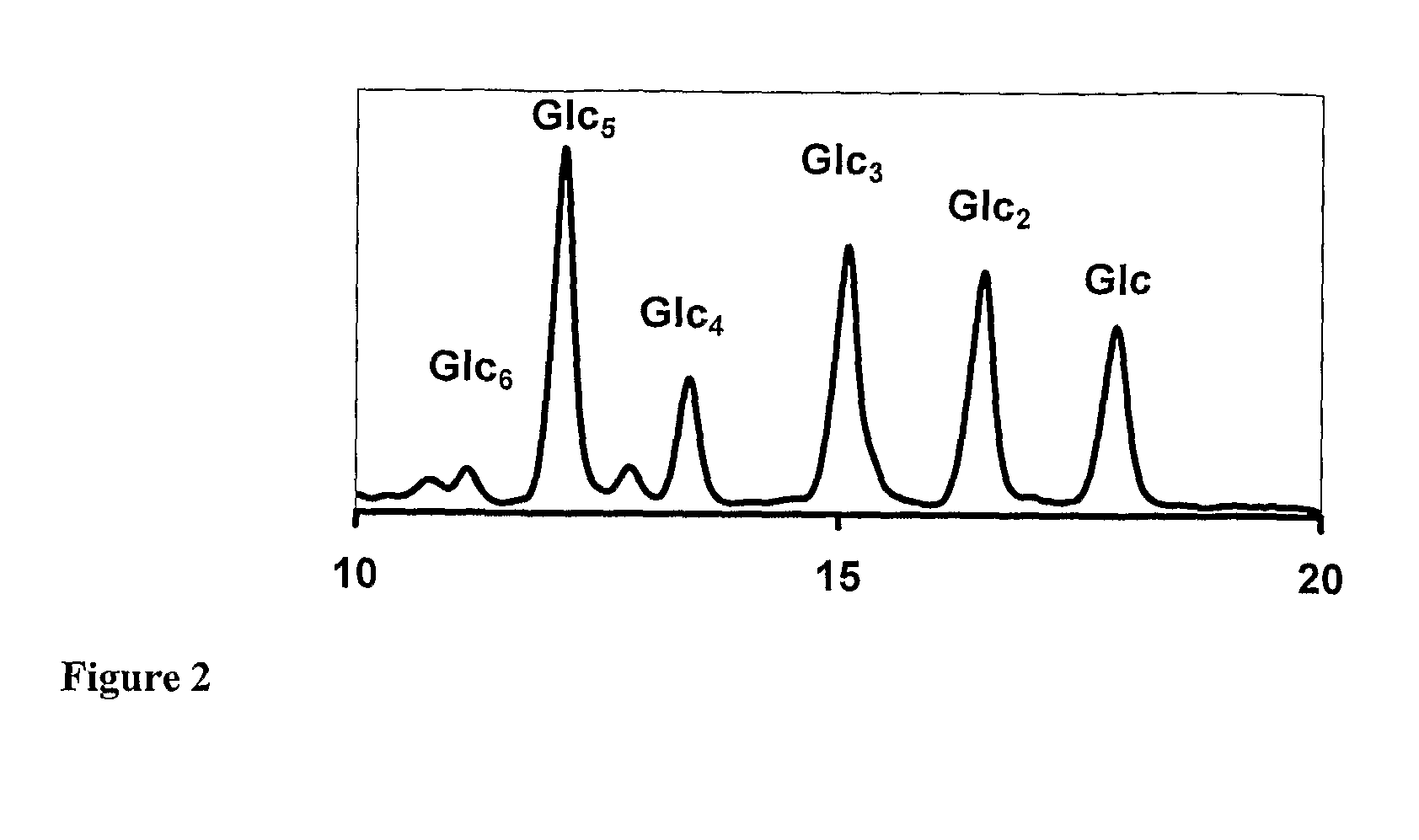Anionic oligosaccharide conjugates
a technology of oligosaccharide and conjugate, which is applied in the field of anionic oligosaccharide conjugate, can solve the problems of difficulty in accessing oligosaccharides comprising 6 or more monosaccharides, the difficulty of maintaining structural diversity and low cost, and the difficulty of synthesis of such compounds
- Summary
- Abstract
- Description
- Claims
- Application Information
AI Technical Summary
Benefits of technology
Problems solved by technology
Method used
Image
Examples
example 1
Synthesis of N′-Fmoc-1-N-glycinamidomaltotrioside
[0195]Numerous examples exist in the prior art for the formation of glycosylamines, the methods of which are applicable to a diverse range of oligosaccharide conjugates.
[0196]Briefly, maltotriose (1 g, ˜2 mmol) and NH4HCO3 (160 mg, 2 mmol) were dissolved in ammonia (10 mL). The solution was incubated for 32 hours at 40° C. before evaporation to dryness in a centrifugal evaporator. To remove residual ammonia, the residue was dissolved in the minimum of water and lyophilized. A portion of the residue (820 mg) was dissolved in a mixture of DMSO (10 mL), DMF (6 mL) and DIPEA (0.6 mL). Fmoc-glycine (1.2 g), HOBT (0.5 g) and HBTU (3 g) were added and the solution was incubated for at least 4 hrs before addition of an equal volume of water and acidified with acetic acid (0.6 mL) to quench the reaction. After cooling and filtering, the desired product can be purified by preparative RP-HPLC. For example, up to 2 mL was injected on a 250 mm×10 ...
example 2
Synthesis of N′-Fmoc-1-N-glycinamidomaltotrioside polysulfate
[0198]N′-Fmoc-1-N-glycinamidomaltotrioside (0.5 g, 0.64 mmol) was dissolved in dry DMF (10 mL) and pyridine sulfur trioxide complex (3 g, 19 mmol) added. The solution was incubated at room temperature for 48 hrs and quenched by the addition of water. Analysis of the reaction mixture by RP-IP HPLC with dual UV and ELSD indicated a single broad peak, indicating that no deprotection occurred. The desired product can be purified by preparative RP-HPLC, RP-IP HPLC or AEX chromatography. For example, up to 2 mL was injected on a 250 mm×10 mm ID Exsil C18 column. The column was eluted with a binary gradient mixture of solvent A (0.1% TFA) and solvent B (50% acetonitrile). The gradient comprised 6% B for 3 minutes, increased to 50% at 15 minutes. The flow rate was 2.5 mL / min. The eluent was monitored at 290 nm and fractions collected by an autosampler. Fractions containing the desired product were pooled and concentrated to drynes...
example 3
Synthesis of Chloroacetyl Building Block A (Scheme 1) for Maltotriose Series
[0199]Water and NaHCO3 (0.2 g) were added to N′-Fmoc-1-N-glycinamidomaltotrioside polysulfate and adjusted to pH 12.5 by the addition of 10 M NaOH. The Fmoc protected product dissolved fully as the pH was increased, after which a precipitate formed. Analysis of the reaction mixture by RP-IP HPLC indicated complete deprotection within 20 minutes. The pH was adjusted to 8.5 by the addition of acetic acid and the aqueous solution extracted with CHCl3 (3×10 mL) and hexane (1×10 mL). Chloroacetic anhydride (0.5 g) and NaHCO3 (1 g) were added to the aqueous solution and, periodically, the pH was adjusted to 8.25 by the addition of NaHCO3. After 1 hr, analysis of the reaction mixture by RP-IP HPLC indicated complete reaction. The product was purified by AEX after first acidifying the reaction to pH 6 by the addition of 2 M HCl and 5 M NaCl added to render a final concentration of approximately 0.3 M NaCl. The solut...
PUM
| Property | Measurement | Unit |
|---|---|---|
| pH | aaaaa | aaaaa |
| time | aaaaa | aaaaa |
| time | aaaaa | aaaaa |
Abstract
Description
Claims
Application Information
 Login to View More
Login to View More - R&D
- Intellectual Property
- Life Sciences
- Materials
- Tech Scout
- Unparalleled Data Quality
- Higher Quality Content
- 60% Fewer Hallucinations
Browse by: Latest US Patents, China's latest patents, Technical Efficacy Thesaurus, Application Domain, Technology Topic, Popular Technical Reports.
© 2025 PatSnap. All rights reserved.Legal|Privacy policy|Modern Slavery Act Transparency Statement|Sitemap|About US| Contact US: help@patsnap.com



